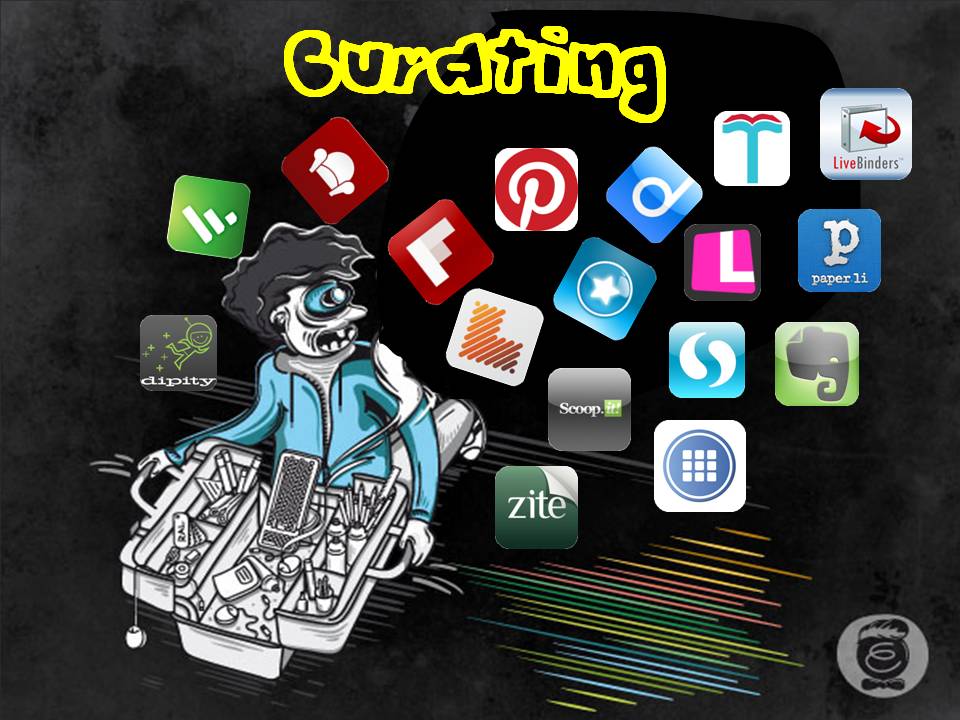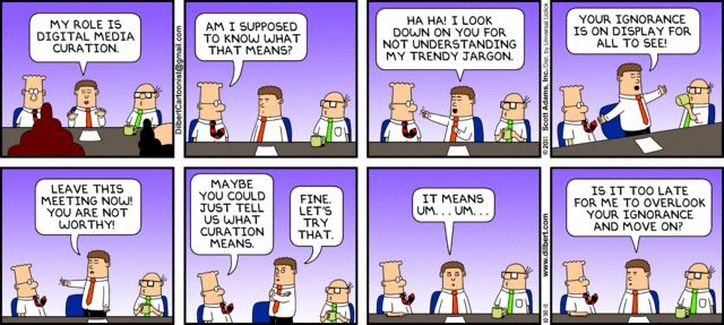This is an aspect of social media that I know least about and have most to learn. Using the museum analogy I see a curator (I created a geological museum in the dim and distant past!) as someone who looks after collections of things, who cares for and maintains them, makes them available to others, perhaps through displays and may be involved in the educational use of the collections, who may also search for and choice of the collections. I guess most of these ideas can be applied to collections of information & knowledge resources or artefacts either at a personal level or on behalf of a group or community. I also found other synonyms like keeper, steward, custodian and guardian. At our dinner time discussion I asked my children whether they maintained any collections of things and they thought they didn't although they appreciated that they visited and used collections maintained by others - eg Youtube, Spotify Facebook Harry Potter... Liverpool FC website.......to name a few.
I know I benefit enormously from other people collections, for example I use google images several times a week and the repositories of TED talks and RSA Animate and I'm currently researching family history using the fantastic public records which I can access through Ancestry.com.
I also curate for myself - this website being an example of stuff I'm gathering under the heading of 'my lifewide learning and development'. I have my own playlists on Youtube and music on Spotify. I perpetually gather articles and materials like images and store them for possible future use re-use and I occasionally visit slideshare and flikr for inspiration.
I also curate for other people - the mission of Lifewide Education is to develop knowledge to advance understanding and practice and we do this through our websites and publications. For example I think our thematic issues of Lifewide Magazine serve to bring knowledge assets together and build a meaningful narrative around them and make these accessible to others. The magazine is the way we package display make sense of and disseminate the collections of perspectives and insights we have gained. It takes a great deal of effort to put together and we commission illustrators to illuminate some of the ideas. Having gathered made sense of and packaged these collections we make them available through the Magazine website and disseminate information about them through maillists community fora and websites. These 'curated works' are not just collections of existing materials they include new content in order to frame, link and build on what already exists. They are creative (new) products connecting combining synthesising and extending what already existed.
Similarly our e-book project is intended to bring together accounts of practice in universities and colleges. In the past the websites and wikis we created for the SCEPTrE project now form publicly accessible archives for our work. These projects to gather and create resources that ultimately form collections that are curated and maintained have a strong collaborative and community building dimension to them.
But such things are not the primary concern for BYOD4L and I am delighted to have Sue's collection of tools for harvesting and curating materials from the web which I will work through when I have more time. Through the examples shared on twitter I can see immediately the value of tools for gathering and collating stuff from twitter and I tried Scoop it for some topics I'm interested in. In fact today I was emailed my first daily summary of topics I'm interested in and I now see the value of creating topic lists. A few weeks ago Chrissi introduced me to paper.li and again I can see the potential of this tool as a means of collaborative creating and gathering content around a theme like Lifewide Education.
Sue's tools


 RSS Feed
RSS Feed